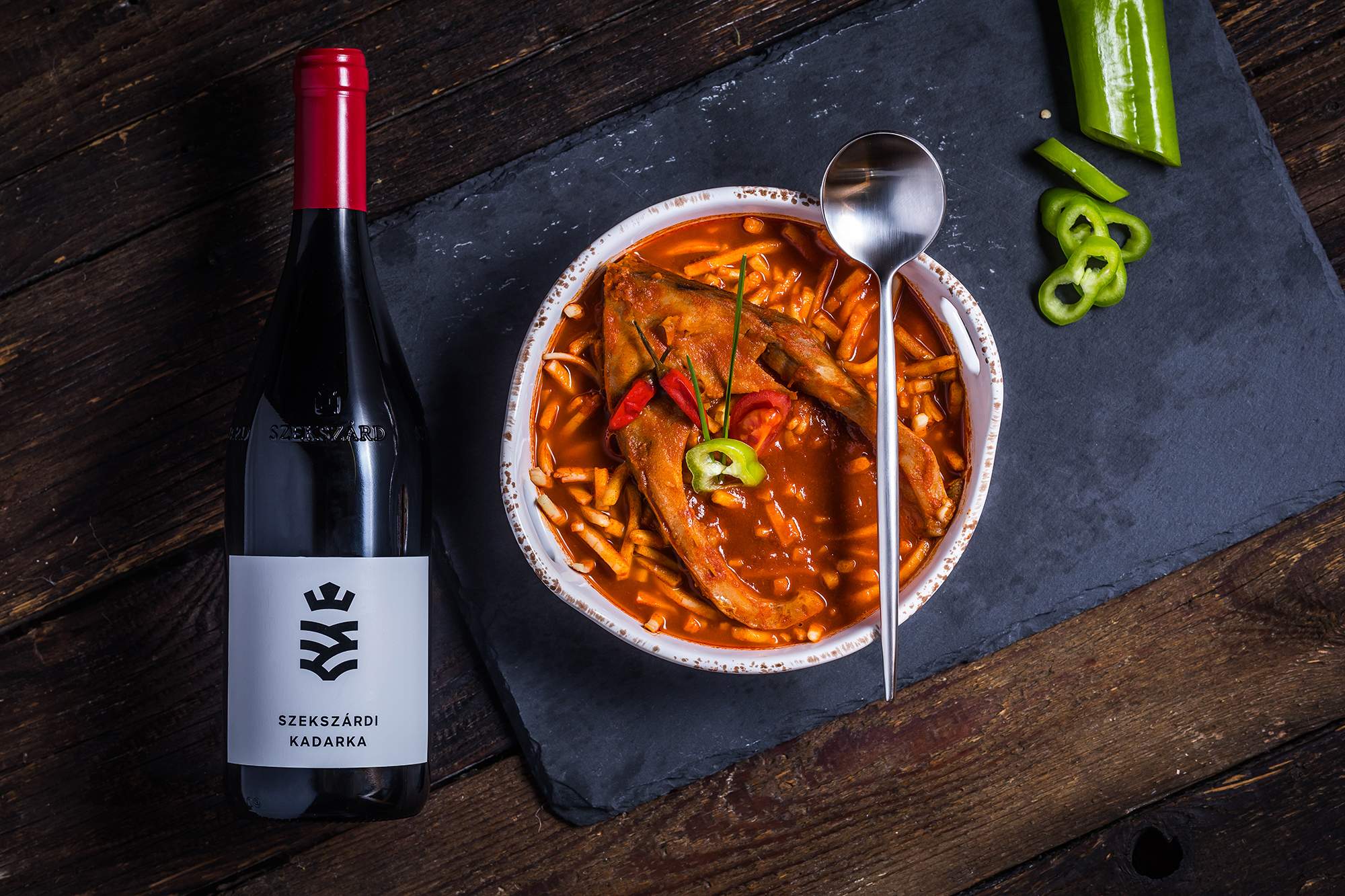We Hungarians consider kadarka as an indigenous variety but in reality it was brought to Hungary from the Balkans. Following the Battle of Várna (1444) large numbers of Serbians were forced to flee the rule of the Ottoman Empire and sought refuge in Hungary. The settlers then not only planted kadarka but also passed on their viticultural and winemaking expertise. Before the phylloxera epidemic almost 70% of grapes cultivated in Hungary were kadarka. After the wine blight kadarka gradually lost its popularity and eventually it almost completely disappeared. From the 1990s growers have shown a renewed interest in the variety and today kadarka is grown on 400 hectares nationwide a quater of which is in Szekszárd.


Growers in Szekszárd have always had a special fondness for kadarka clearly demonstrated by the fact that all the old vines in Szekszárd are kadarka. Kadarka vineyards were traditionally densely planted (1x1m) and the vines were head trained. If each stock produced just 1 kg of grapes that would still provide sufficient amounts of wine and with this yield quality was good too. Around the stem of the vinestocks a small cup was created in the soil which served two purposes: on the one hand it protected the soil against erosion as each cup could hold onto a few liters of water, on the other hand the heat accumulated during the day time by these „parabola antennae” would get reflected back to the grape bunches at night.
The flowers of kadarka are hermaphroditic that is bunches of flowers feature female, male and hermaphroditic flowers at the same time. Kadarka is a capricious variety with a long vegetative period, its buds and shoots are sensitive to frost, the berries and arms ripen late (by the end of October), therefore it needs a lot of heat and light. Kadarka grapes have thin skins so they are susceptible to disease and the wine it produces is light coloured with low tannins.

What makes Szekszárd kadarka unique? Its greatest asset is the complex and vibrant nature of its acidity. The soil in Szekszárd is mostly loess, sandy loess or red clay – what really sets various plots apart is the amount of limestone. Vineyards with higher calcareous content produce wines with elevated acidity which is crucial for this variety as it is the key to its fine elegance. Another factor contributing to the rich diversity of Szekszárd kadarka is the geographical structure of the region resulting in many various microclimates and thus differing ripening patterns.
Because of its sensitivity to unfavourable weather conditions kadarka cannot be produced in every year. However kadarka harvested at the right moment in a sunny, not too wet vintage can age well up to a decade. When vinifying kadarka Szekszárd winemakers pay special attention not to suppress the varietal character with too much oak, for the same reason some opt for aging in stainless steel tanks. Old vine kadarka is better suited to oak ageing however most winemakers still prefer using only used large casks. As a blending component i.e. in Szekszárd Bikavér kadarka brings perfume and vibrancy to lift the wines. Nevertheless the share of kadarka in blends rarely exceeds 5-6% as its character might easily overwhelm that of other varieties.
However winemakers cannot rely solely on tradition. Several winemakers in the region are experimenting with new clones and are carefully studying the plantings and the wines. The goal is to find clones and farming practices which result in more reliable quality and consistent harvests.
The most often used descriptors for Szekszárd kadarkas are red currants, cherries, rose hips, spices and also playfulness, lightness and elegance. With that in mind it’s easy to see how wide the range of suitable dishes might be. Some of the best matches are classical Hungarian dishes seasoned with paprika and/or containing tomatoes. However if there is one dish worth highlighting, a dish that is hard even to think of without mentioning kadarka then it’s Hungarian fish soup, its seasoning and ingredients make it the ideal pairing.
 English
English
 Magyar
Magyar 





